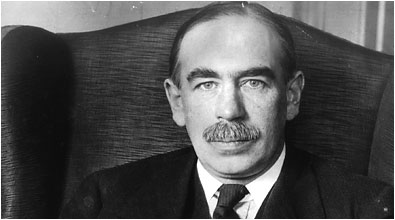The Reserve Bank of India releases the aggregate deposits with scheduled commercial bank data every week.
Data released on April 22, 2016, suggests that for the year 2015-2016, the aggregate deposits with scheduled commercial banks grew by 9.72%. This is the lowest in more than 25 years and the second lowest in more than 50 years.
Only in 1990-1991, the year before economic reforms were introduced, had the growth been slower at 9.65%. Also, this is the second lowest deposit growth since 1963-1964. Further, it is only the second time that deposit growth has been in single digits since 1963-1964.
And this is a worrying trend.
Why is this happening? One reason is that household savings as a whole have fallen over the years primarily because of the high rate of inflation that prevailed between 2008 and 2013. The household savings fell from 22.2% of gross national disposable income in 2011-2012 to 17.8% in 2013-2014. More recent data points are not available.
The household financial savings was at 7.5% of gross national disposable income in 2014-2015. As the RBI annual report for 2014-2015 points out: “Growth in aggregate deposits, which forms a major component of money supply, has generally been declining over the years in line with a decrease in the saving rate of the economy. In addition, slowdown in credit growth led to lower deposit mobilisation by banks.”
Raghuram Rajan, the governor of the Reserve Bank of India (RBI), has also offered another reason, whenever this question has been put to him. When deposit growth was faster inflation was also higher, he has explained. In 2010-2011, the aggregate deposits with scheduled commercial banks grew by 15.3%. The consumer price inflation during the year was at 10.45%. In 2012-2013, the deposits grew by 13.8% and the inflation was at 10.44%.
In 2015-2016, the consumer price inflation was 4.83% and the deposit growth was at 9.72%. Once we look the growth from this angle, suddenly it doesn’t look as bad.
In fact, there is another important reason for the fall in the aggregate deposits growth and this reason is not so obvious.
The loan growth of banks (i.e. non-food credit) has been slow over the last few years and this has led to slower deposit growth as well.
In 2015-2016, the total amount of loans given by scheduled commercial banks grew by 10.3%. This was better than the 9.3% growth seen in 2014-2015, but low nonetheless. In fact, the loan growth in the last two years has been the slowest since 1993-1994.
This has had an impact on deposit growth. And how is that? As Michael McLeay, Amar Radia and Ryland Thomas of the Bank of England write in a note titled Money Creation in the Modern Economy: “The vast majority of money held by the public takes the form of bank deposits. But where the stock of bank deposits comes from is often misunderstood. One common misconception is that banks act simply as intermediaries, lending out the deposits that savers place with them. In this view deposits are typically ‘created’ by the saving decisions of households, and banks then ‘lend out’ those existing deposits to borrowers, for example to companies looking to finance investment or individuals wanting to purchase houses.”
As it turns out, things are not as straightforward as that. As the Bank of England authors write: “Commercial banks create money, in the form of bank deposits, by making new loans.”
How is that possible? Let’s say an individual deposits money in a bank. The bank uses that money to make a car loan (assuming that the deposit is large enough). The money is deposited into the account of the borrower. The borrower of the car loan uses that money to buy a car and pays the car dealer. The money is deposited in the account of the car dealer. The car dealer in turn uses that money to pay his employees.
The employees when they are paid, money is deposited into their savings bank accounts. Hence, a loan creates more deposits. The employees then withdraw a part of that money to meet their monthly expenditure. They may also transfer a part of their deposit from a savings bank account into a fixed deposit.
A part of the money that the employees withdraw goes towards paying their local kirana wallah(or the mom and pop shop) from where their monthly grocery is bought. A part of this spend again finds its way back into the bank as a deposit.
This multiplier effect essentially ensures that new loans create more deposits. And given that loan growth of banks has been slow, it is not surprising that deposit growth is slow as well. Hence, for deposit growth to pick up loan growth will have to pick up.
And what needs to happen for loan growth to pick up? The simplistic answer is that lower interest rates will lead to higher loan growth. But things are not as simple as that. Interest rates also need to be maintained over the prevailing rate of inflation in order to encourage people to save. Further, lower interest rates do not always encourage people to borrow, as is more than obvious across large parts of the Western world, currently.
What needs to improve is the promoter interest in doing new business for which they need to borrow.
As Mahesh Vyas of Centre for Monitoring Indian Economy wrote in a recent piece: “Why do a significantly large number of projects continue to be stalled when most important reasons for phenomenon have already played themselves out? The most prominent reason turns out to be lack of promoter interest. One third of the total investments whose implementation was stalled in 2015-16 was because of lack of promoter interest. Another 15 per cent of the promoters who stalled implementation stated that the current market conditions were unfavourable to pursue their projects further. The two reasons are essentially the same – that these are not very good times to invest.”
The column originally appeared on The 5 Minute Wrapup on April 29, 2016


